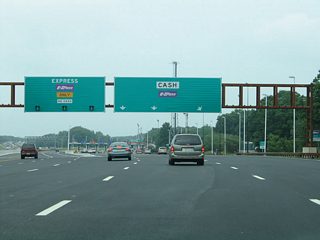
The Harbor Freeway shoulder stations would open on November 18, 2000. Opening of the final one-mile elevated section from 39th Street to Adams Boulevard (including 37th Street/USC station) was delayed until July 28, 1997. Because of uncertainty on the opening date, buses would not start using the facility a few weeks later on August 1, 1996. Īfter about 20 years of planning and construction, : i the Harbor Transitway opened on June 26, 1996, at a cost of $498 million. The project to widen the Harbor Freeway and build the Harbor Transitway was planned and constructed concurrently with the new Interstate 105 (Century Freeway), which was highly controversial and the California Department of Transportation (Caltrans) was required by a consent decree to include HOV lanes and a transitway, which became the C Line. : 3 The project also built the off-highway Harbor Beacon Park & Ride in San Pedro, originally intended to be a transit center for the city. On this section of freeway, buses travel in the general-purpose lanes and make stops at new stations on the shoulder at Carson and Pacific Coast Highway. South of State Route 91 to San Pedro, a 9.3-mile (15.0 km) section of the Harbor Freeway was widened from six to eight lanes. : 2 The project also included new stations in the median of the transitway at 37th Street/USC, Slauson, Manchester, Harbor Freeway, and Rosecrans along with the Harbor Gateway Transit Center (then called the Artesia Transit Center) located southeast of the Harbor Freeway/State Route 91 interchange and connected by a flyover ramp. The most visually striking part of the project were the 2.6 miles of viaducts that elevated the transitway directly above the regular freeway traffic. The Harbor Transitway project built 10.3 miles (16.6 km) of new lanes (two in each direction) for buses and two-person carpools ( high-occupancy vehicle (HOV) lanes) between Downtown Los Angeles and a new transit center in Gardena, California. South of the Harbor Transitway, the Harbor Freeway also has two stations on the shoulder of the highway, Carson station and Pacific Coast Highway station which opened on November 18, 2000.Ģ.6 miles of the Harbor Transitway runs on viaducts elevated above regular traffic on the Harbor Freeway. It is also used by Los Angeles Metro Bus, Dodger Stadium Express, GTrans, LADOT Commuter Express, OC Bus and Torrance Transit bus services, most of which only run during weekday peak periods. The Harbor Transitway is utilized by the J Line, a bus rapid transit route operated by the Los Angeles County Metropolitan Transportation Authority. The facility opened for two-person carpools ( high-occupancy vehicle lanes) on June 26, 1996, for buses on Augand was converted to HOT lanes as part of the Metro ExpressLanes project on November 10, 2012. Buses also make intermediate stops at 37th Street/USC, Slauson, Manchester, Harbor Freeway, and Rosecrans stations. The Harbor Transitway (also known as the I-110 Express Lanes) is a 10.3-mile (16.6 km) shared-use express bus corridor (known as a busway or transitway) and high occupancy toll (HOT) lanes running in the median of Interstate 110 (Harbor Freeway) between Downtown Los Angeles and the Harbor Gateway Transit Center in Gardena, California. Los Angeles Metro Bus: Express 460, Express 550.This process allows the owner to be an active participant during the design process and make informed decisions on design options based on the contractor’s expertise. The contractor acts as the consultant during the design process and can offer constructability and pricing feedback on design options and can identify risks based on the contractor’s established means and methods.

If the owner, designer and independent cost estimator agree that the contractor has submitted a fair price, the owner issues a construction contract and the Construction Manager then becomes the General Contractor. When the owner considers the design to be complete, the Construction Manager has an opportunity to bid on the project based on the completed design and schedule.

It consists of two phases: (1) Design and (2) Construction.

The CM/GC project delivery method is collaborative and integrates the Owner, Designer and Construction Manager/General Contractor. PROJECT DELIVERY METHOD: Construction Manager/General Contractor (CM/GC)


 0 kommentar(er)
0 kommentar(er)
